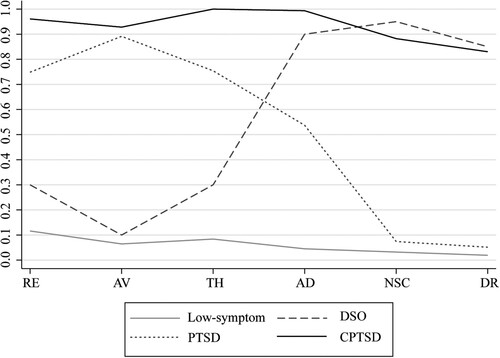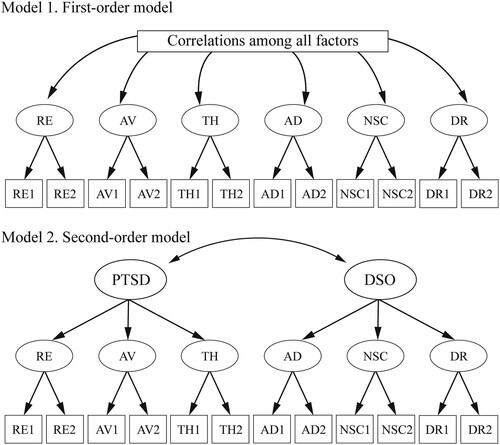Figures & data
Table 1. Fit statistics for CFA of the ITQ.
Table 2. Fit statistics for latent class analysis.
Figure 2. Mean scores on ICD-11 PTSD and CPTSD symptom LCA classes in North Korean defectors who were exposed to traumatic events (N = 503).
Note: Re: re-experiencing; AV: avoidance; TH: sense of current threat; AD: affective dysregulation; NSC: negative self-concept; DR: disturbances in relationship.

Table 3. Unadjusted multinomial regression for PTSD and CPTSD symptom LCA classes (N = 503).
Table 4. Difference on psychological state and quality of life across ICD-11 PTSD and CPTSD symptom LCA classes (N = 503)
Supplemental Material
Download MS Word (37.1 KB)Data availability statement
The data that support the findings of this study are not publicly available due to privacy and sensitive information of the participants. Moreover, the data contain potentially identifiable participants. The restricted data are available from the corresponding author upon reasonable request.

